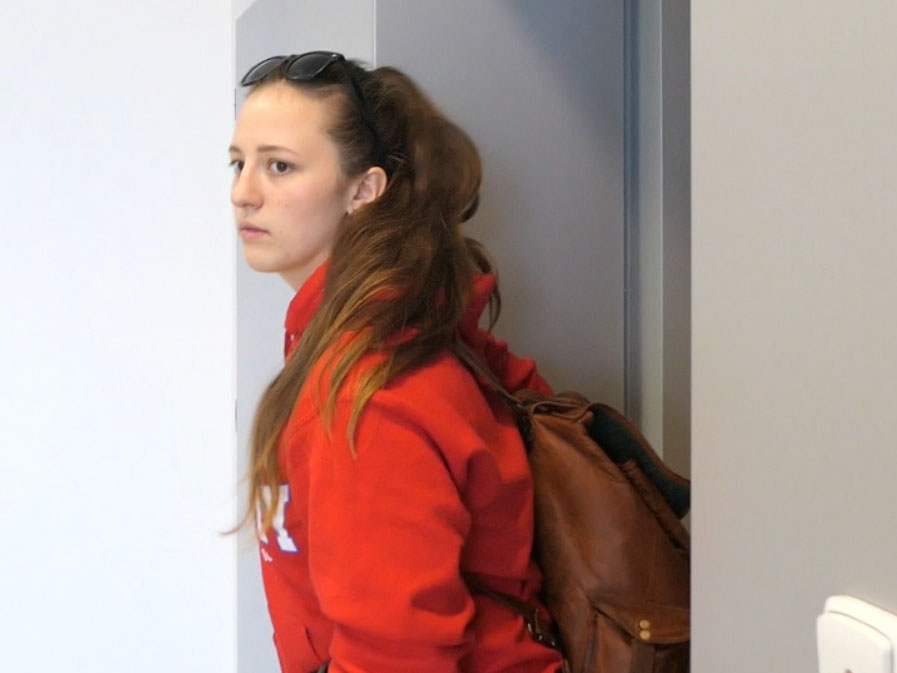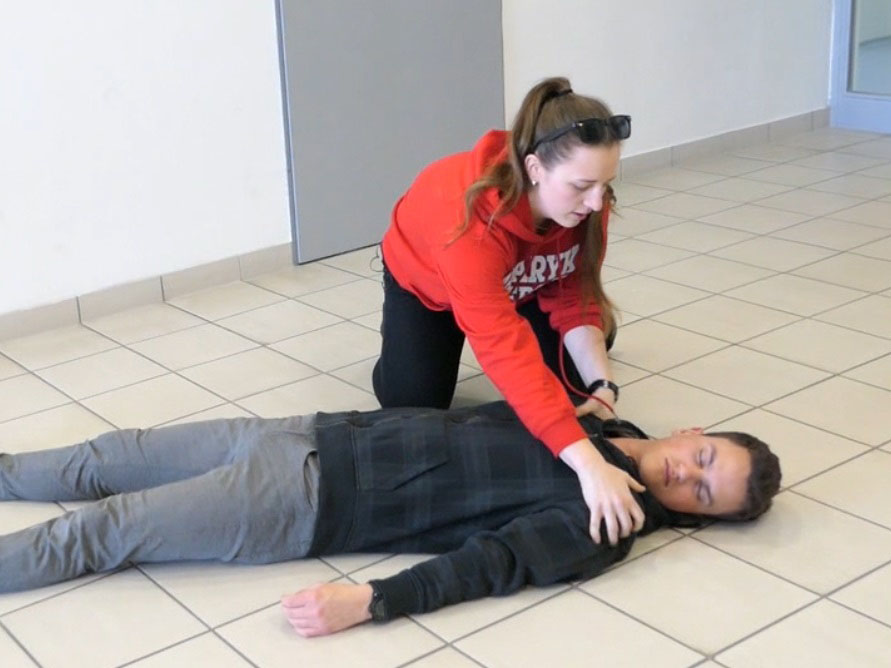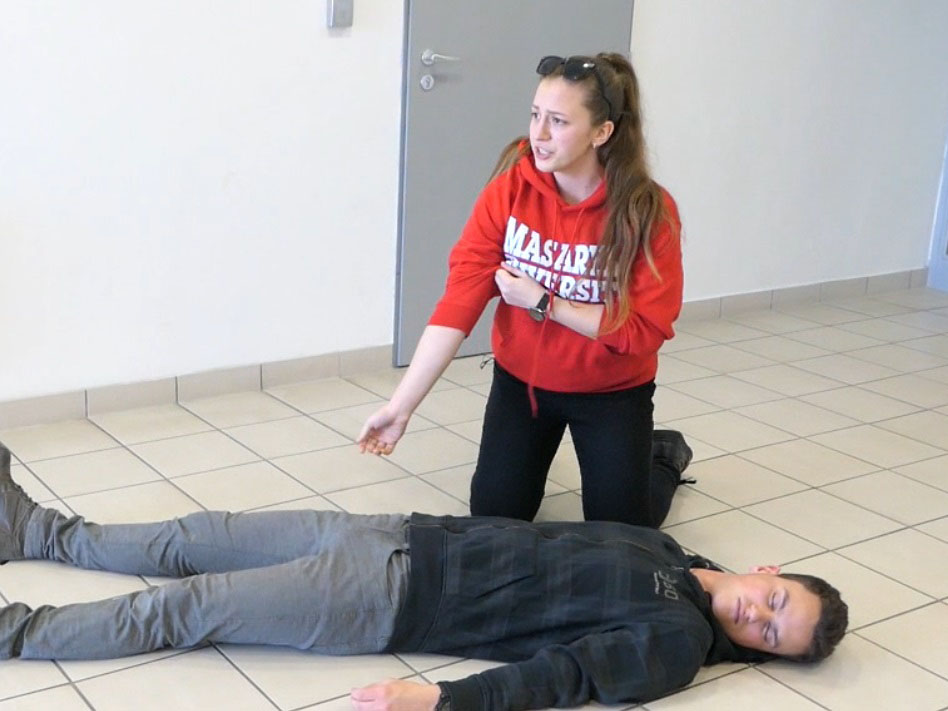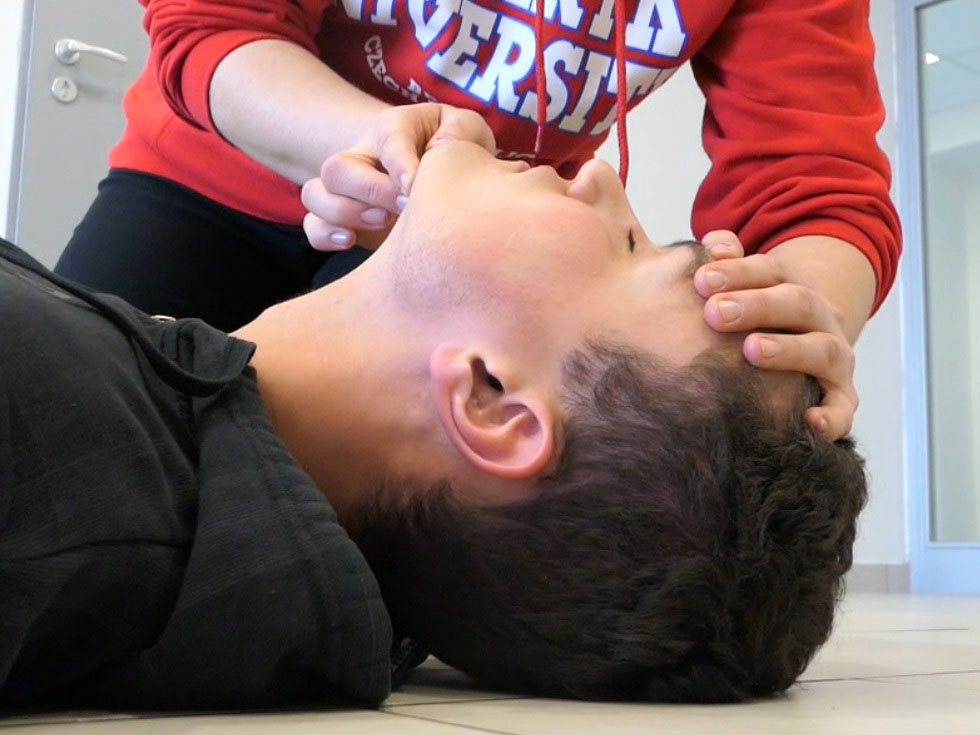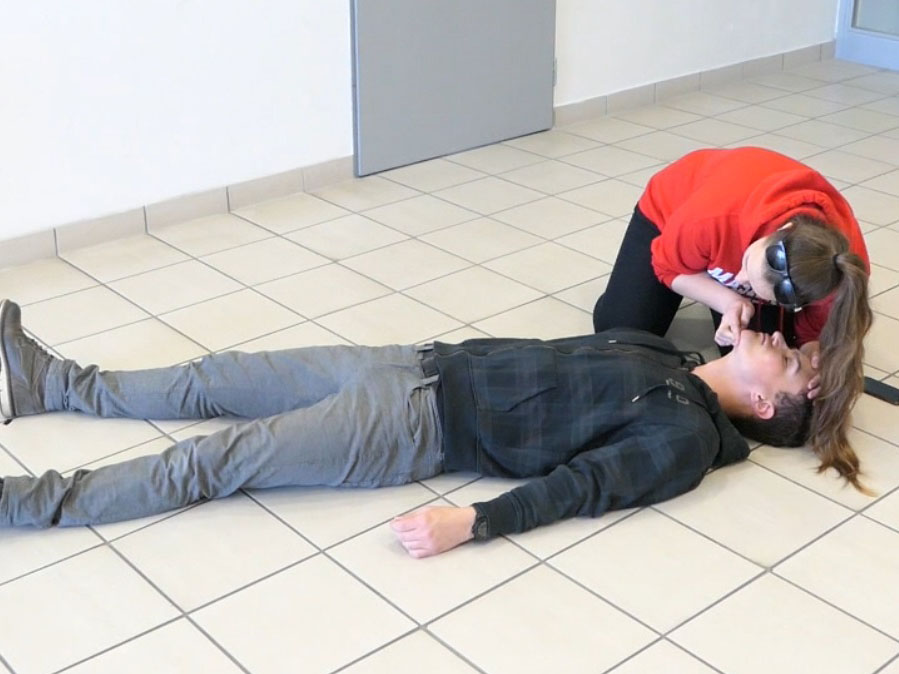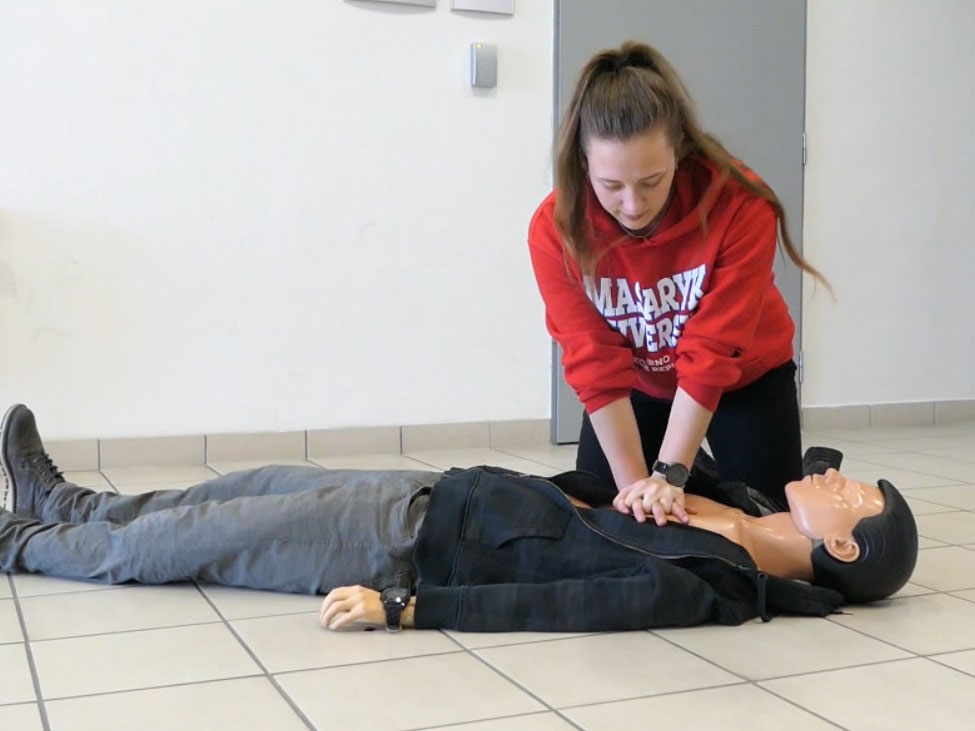Basic life support and AED in adult
Algorithm of basic life support in adult
Since we should always follow the algorithm SSS ABC, here is a step-by-step sequence:
The letter C can also mean circulation, more precisely blood circulation, which we support by the correctly performed CPR.
The patient is not breathing. What will be your next steps?
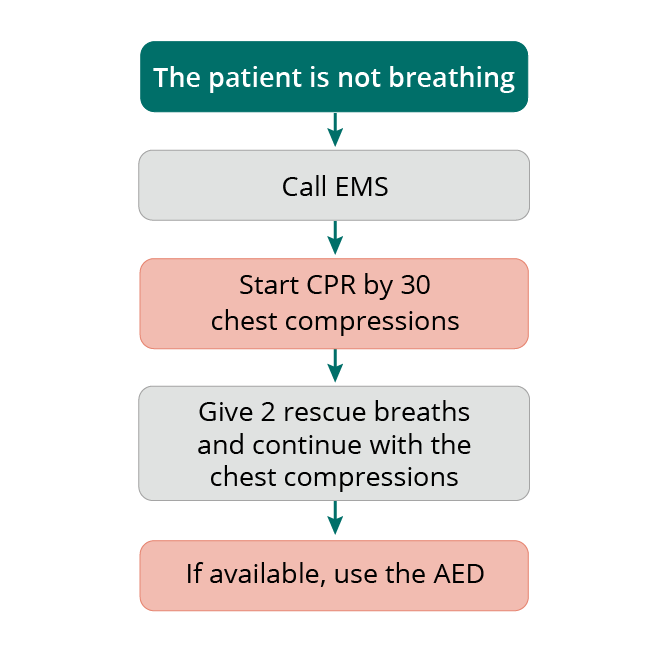
-
1. Call EMS
- You are alone in the area of the incident. - Dial 155 or use the app Záchranka. In both cases, turn on the loudspeaker on your phone.
- There are more rescuers in the area of the incident. - If you are not alone, ask someone around for help. Tell him to call EMS and make sure that he followed your instructions.
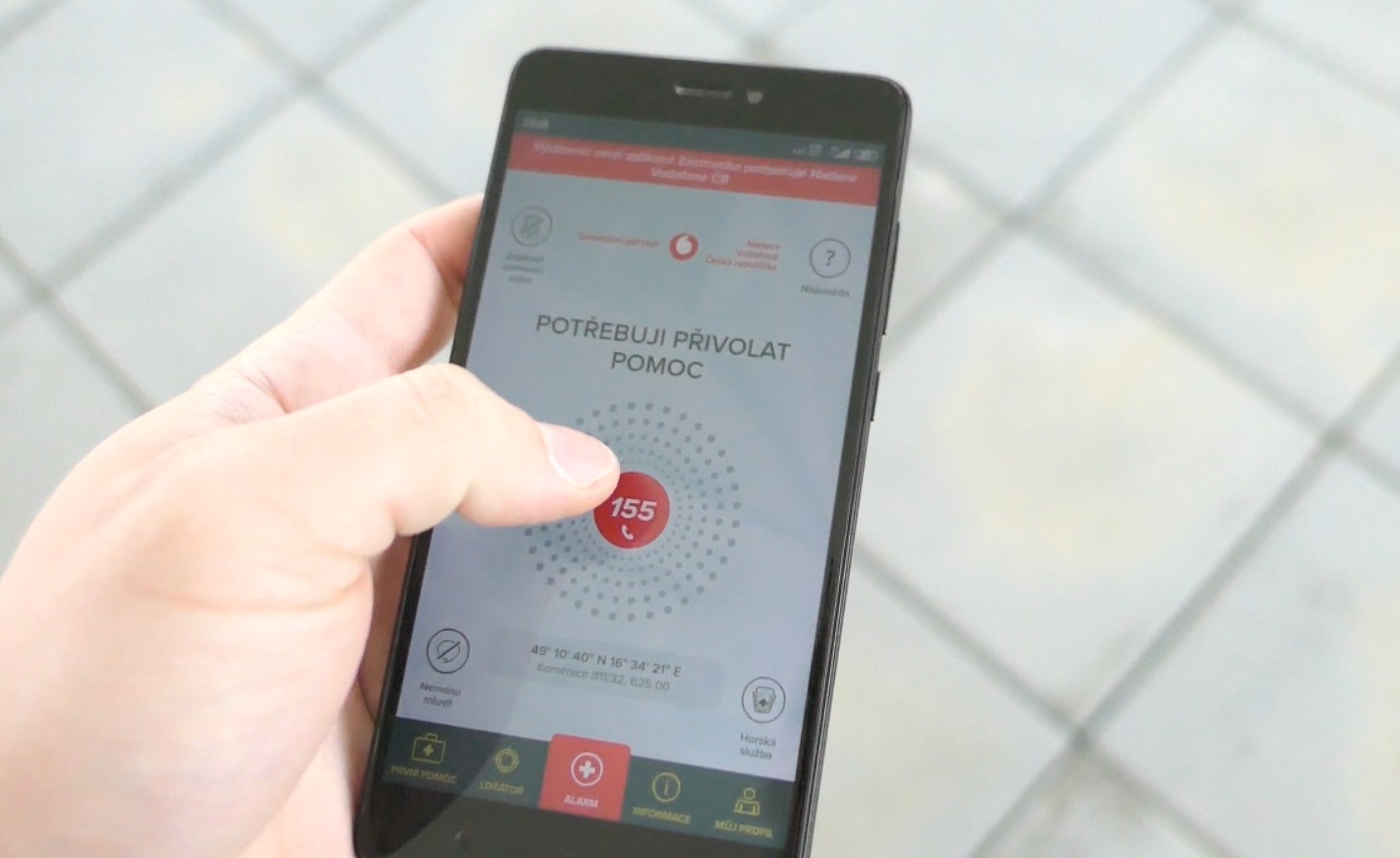
-
2. 30 chest compressions
Start CPR by compressing the patient's chest.
-
3. 2 rescue breaths
Continue with chest compressions and rescue breaths in a ratio of 30 : 2.
-
4. As soon as the AED is available, switch it on and follow its spoken/visual instructions.
AED = automated external defibrillator - details on its use in chapter 2.6
- You are alone in the area of the incident. - Leave the patient only if the AED is situated in your immediate proximity. Providing CPR has always priority over searching for the AED.
- There are more rescuers in the area of the incident. - If the AED is available within walking distance, send one of the rescuers to bring the AED. A dispatcher will provide you with information about the location of the closest AED.
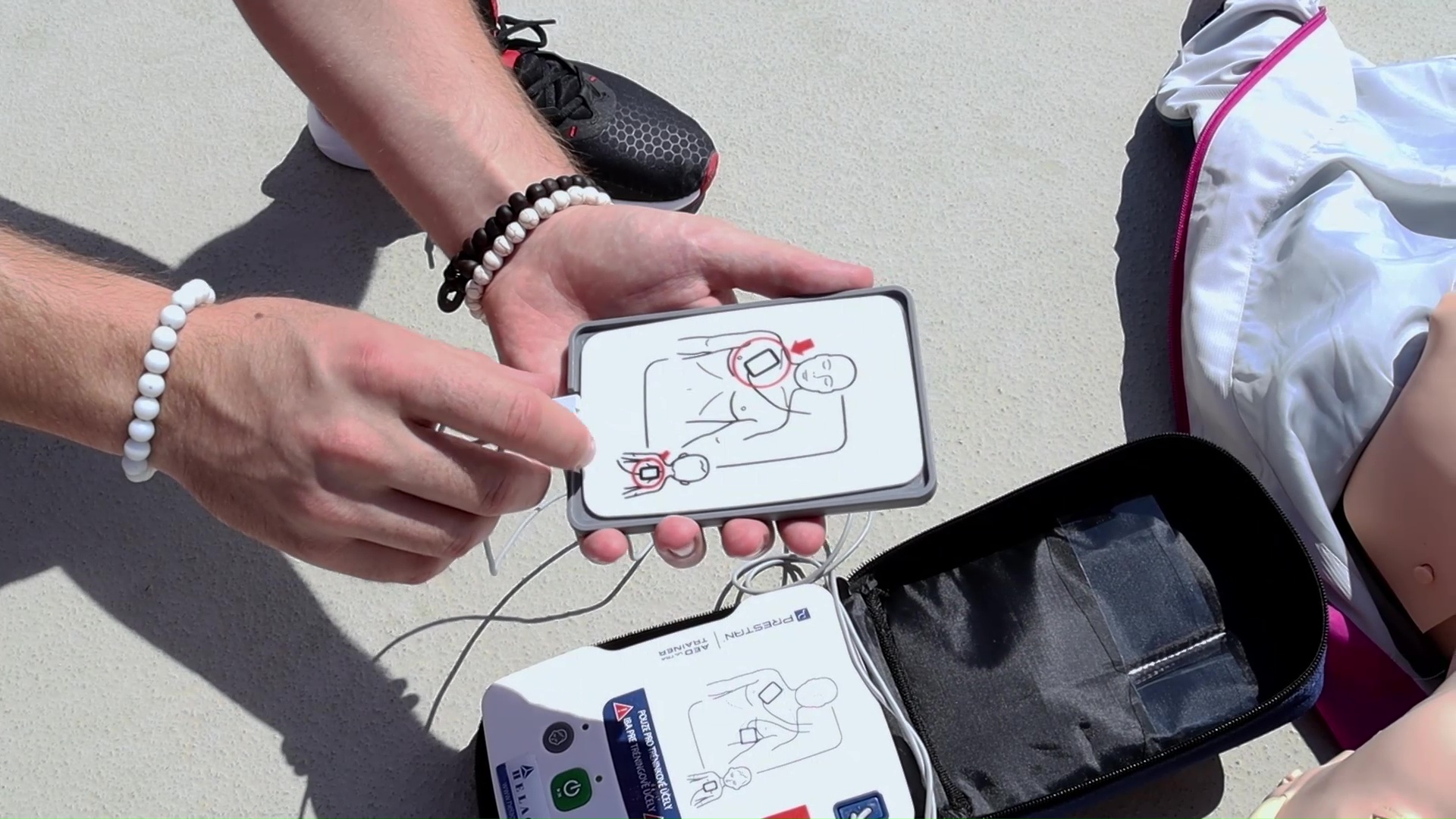
Parameters of the CPR in adults:
| location of the chest compressions | the centre of the patient's chest |
| compression depth | 5–6 cm (no more than 6 cm) |
| compression rate | 100–120/min |
| compression-breathing ratio | 30 : 2 |
| interruptions of the chest compressions for giving rescue breaths | max. 10 seconds |
Pulse palpation is not a reliable method to confirm the cardiac arrest; that is the reason why this step is omitted in the algorithm SSS ABC.
Response time of EMS is up to 20 minutes; during this period, the survival outcome depends on bystanders' decision to start high-quality CPR and, eventually, use the AED.
The following video recaps the whole algorithm.
